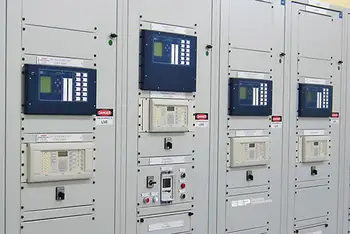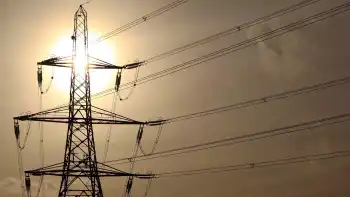Efficiency focus of GRE plant
By McClatchy Tribune News
Protective Relay Training - Basic
Our customized live online or in‑person group training can be delivered to your staff at your location.

- Live Online
- 12 hours Instructor-led
- Group Training Available
Construction workers now number 160 and GRE construction site manager Dennis Pozarnsky said the number will continue to rise through the fall and into winter. The number of workers should peak at about 400 in January and the plant should produce electricity by March 31, 2010. Visitors to the site also had an opportunity to take a computer model tour of the completed Spiritwood Station.
"The computer model can walk you through the plant in virtual reality," Pozarnsky said. The coal-fired plant will feature the latest technology in emissions control and efficiency, said Mark Strohfus, GRE's environmental project leader, environmental services.
Coal energy is converted into electricity through steam, he said, but it takes a lot of energy to produce it. Rather than waste the steam, it will be piped out for use in manufacturing.
"One of the unique aspects of Spiritwood Station is that it's a combined heat and power plant, which means higher efficiency," Strohfus said. "A typical power plant is about 33 percent efficient. This plant, with Cargill and the ethanol plant, will be a out 64 percent efficient."
In a typical power plant that means it takes three units of energy expended to get one unit of usable energy. Strohfus said that's "not very efficient." By sharing much of the steam heat with its partners, Cargill Malt and the proposed ethanol plant in the Spiritwood Energy Park, all three will benefit.
The steam heat will be used in the actual manufacturing operation, not in heating the building. It will be used to process barley and ethanol. Strohfus said the steam needed by the two manufacturers amounts to what is produced in making about 50 megawatts of electricity.
"Higher efficiency means less pollution," he said. In its Spiritwood plant, GRE is using dried lignite coal, which Strohfus said further improves the efficiency because of the increased heating value. For example, when an amount of dried lignite has a heating value of 7,500 BTUs, an equal amount of lignite that hasn't been dried has a heating value of 6,300 BTUs.
The result is more heat from the same amount of coal. Beyond that, Spiritwood Station is going to be equipped with the latest in emissions control technology as well, Strohfus said. It's officially called best available control technology or BACT. The technology being used wasn't even thought of 15 years a o, he said, and it's continually being improved. Now, 99.9 percent of the particulates - ash or coal dust - going out the stack are eliminated.
"You should only see steam vapor," he said. "If you see anything yellow coming out of the stack it will be nitrous oxide. Hopefully, we won't have any of that with ammonia injection." To control nitrous oxide emissions, the plant will be equipped with an ammonia injection system.
A "bag house," which operates like a giant vacuum cleaner, sucks out particulates before they can leave the stacks. A powdered activated carbon injection system is used to reduce mercury emissions by at least 70 percent. And a limestone injection system, usually called a scrubber, lowers the emissions of sulfur dioxide.
"We must comply with the (Environmental Protection Agency) EPA's ambient air quality standards, which are designed to be protective of sensitive people," Strohfus said. "It's part of the permitting process."
Although carbon dioxide is not one of EPA's regulated pollutants at this time, Strohfus said he figures it won't be long before it will be.
At this point, the plant will be in compliance with the ambient air quality standards for carbon dioxide emissions. Once the plant is up and running carbon dioxide as well as other emissions will be monitored in the stacks to make sure they're within emission limits.
"The environmental rules are complicated and challenging," he said. "We expect them to get more stringent." As another way to reduce emissions, GRE is in the midst of a study on biomass fuel. Strohfus said the company hopes to use 10 percent biomass as fuel in Spiritwood Station, rather than all coal. Biomass includes crop waste and switchgrass as possibilities for fuel.
In Minnesota, tree trimming waste is used. "The thing about using biomass crops is they're a zero greenhouse-gas emitting fuel," he said. "What's a good biomass fuel to use is part of the study."











